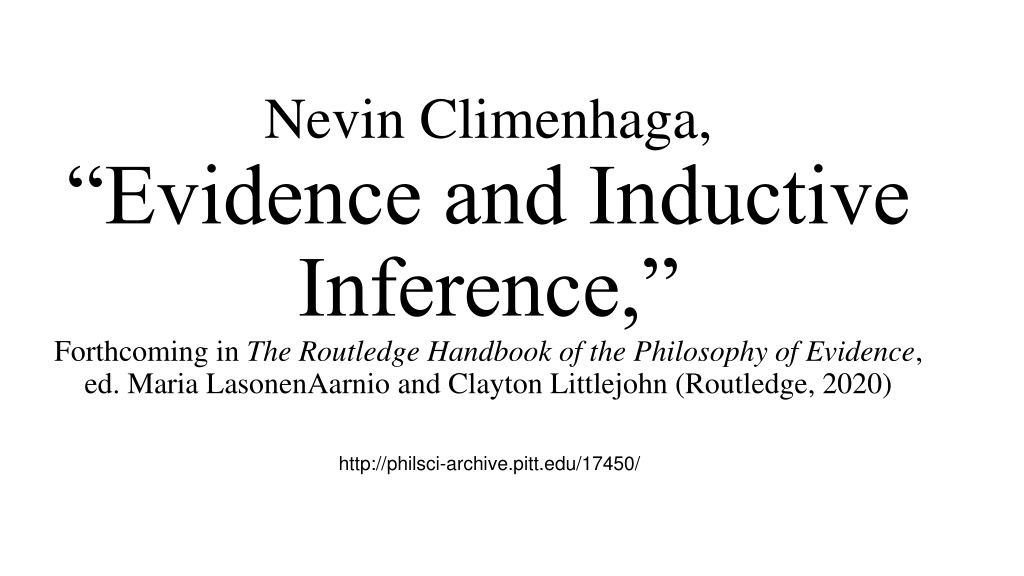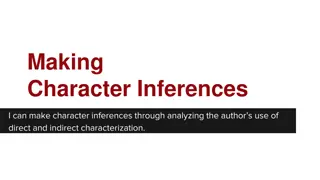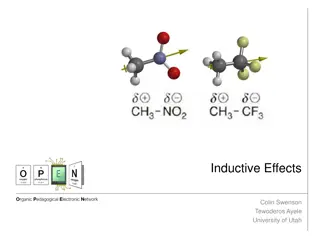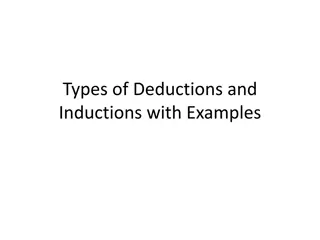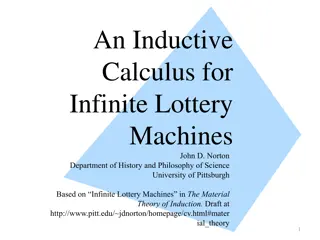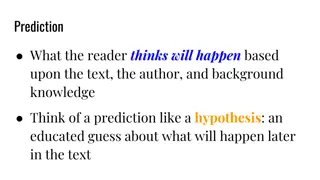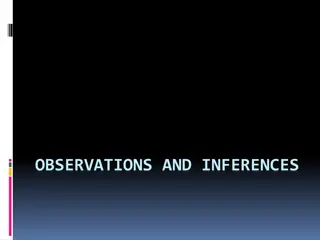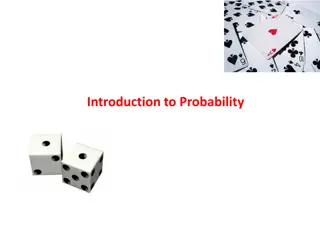Exploring Inductive Inferences and Their Relation to Probability
Nevin Climenhaga delves into the world of inductive inferences, categorizing them into downward, upward, and sideways forms. He discusses connections with probability, confirmation, epistemic defeat, and more, emphasizing the distinction between direct and indirect forms of inferences.
Uploaded on Sep 10, 2024 | 0 Views
Download Presentation

Please find below an Image/Link to download the presentation.
The content on the website is provided AS IS for your information and personal use only. It may not be sold, licensed, or shared on other websites without obtaining consent from the author. Download presentation by click this link. If you encounter any issues during the download, it is possible that the publisher has removed the file from their server.
E N D
Presentation Transcript
Nevin Climenhaga, Evidence and Inductive Inference, Forthcoming in The Routledge Handbook of the Philosophy of Evidence, ed. Maria LasonenAarnio and Clayton Littlejohn (Routledge, 2020) http://philsci-archive.pitt.edu/17450/
Goals (from abstract) A typology of the different kinds of inductive inferences we can draw from our evidence. Subsume canonical forms of inductive inference mentioned in the literature, such as inference to the best explanation, enumerative induction, and analogical inference. Divide inductive inferences into (a) downwards inferences, (b) upwards inferences, (c) sideways inferences Explore connections with probability and confirmation, epistemic defeat, the relation between abduction and enumerative induction, the compatibility of IBE and Bayesianism, and theories of epistemic justification. Distinguish between direct and indirect forms of downwards and upwards inferences
The Technical Gadget Variables: Grandfather smokes, Father smokes, DAG: Directed Acyclic Graphs Represent causal relations and non- causal grounding relations. Arrows: Grandfather smokes increases probability that Father smokes Markov condition satisfied. A DAG represents explanatory relations between our variables by use of directed arrows. Acyclic: No cyclic feedback loops. Mother smokes Father smokes
Inference forms to be accommodated (List from p.3) - Abduction - Analogical inference - Bayesian inference - Causal inference - Direct inference - Enumerative induction - Inverse inference - Inference to the best explanation - Predictive inference - Statistical inference - Universal inference
Direct upward downward
Indirect upward downward
Indirect sideways
Downward types Cause to effect Explanation to its prediction Direct inference (i.e. population to sample) downward Causes include qualitative hypotheses: Friend promises to meet for lunch Friend meets for lunch
Upward types Bayesian inverse inference Sample to its population Enumerative induction (=special case of inference to the best explanation). upward Abduction Inference to the Best Explanation in general Causal inferences (e.g. Mill)
Sideways Predictive (one sample to a different sample) sideways Analogical inference
Have we learned anything useful? The model of inference presented here fits most naturally with a form of foundationalism about epistemic justification, our typology precludes inferring downwards from evidence A to B and then upwards from B to C. You cannot infer from Father s smoking to Jane s smoking, and then from Jane s smoking to Mother s smoking. yes no difficult to reconcile with some rival theories of epistemic justification. For example, on coherentism, what matters for justification is how well your beliefs cohere with each other. This looks like a failure of the system. A bug not a feature. Coherence alone is not enough, but it is usually counted as strengthening evidential support. Whewell: consilience of inductions.
Assessment: This is not a useful handbook survey article, but merely one person s attempt at a general theory of inductive inference. System structured by causal or grounding relations relations represented by simple arrows. There is a probability measure over the variables of the system. Markov condition holds. The causal/grounding relations are represented by the probability measure. The causal/grounding relations admit no cycles. DAG representation of systems is narrow. The zealot s fallacy I have a favorite technical gadget. I can fit examples of A, B and C into it. I have a useful, general theory of A, B and C. A, B and C = various types of inductive inferences. I have a general theory of inductive inference. DAG accounts of causation.
